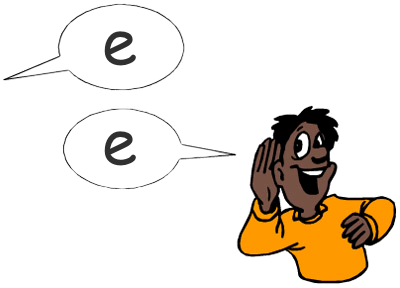7.5 Point-to-Point Correspondence Non-Example #2
Making the sound “e” as a result of hearing someone say “e” also is not an example of point-to-point correspondence because neither the stimulus nor the response has two or more components.
Point-to-Point Correspondence
A relationship between a discriminative stimulus and the response it controls with the following features:
The discriminative stimulus must have two or more components
The response must have two or more components
The first part of the stimulus must control the first part of the response, the second part of the stimulus must control the second part of the response, etc.

There has to be an initial portion of a stimulus to control a response.